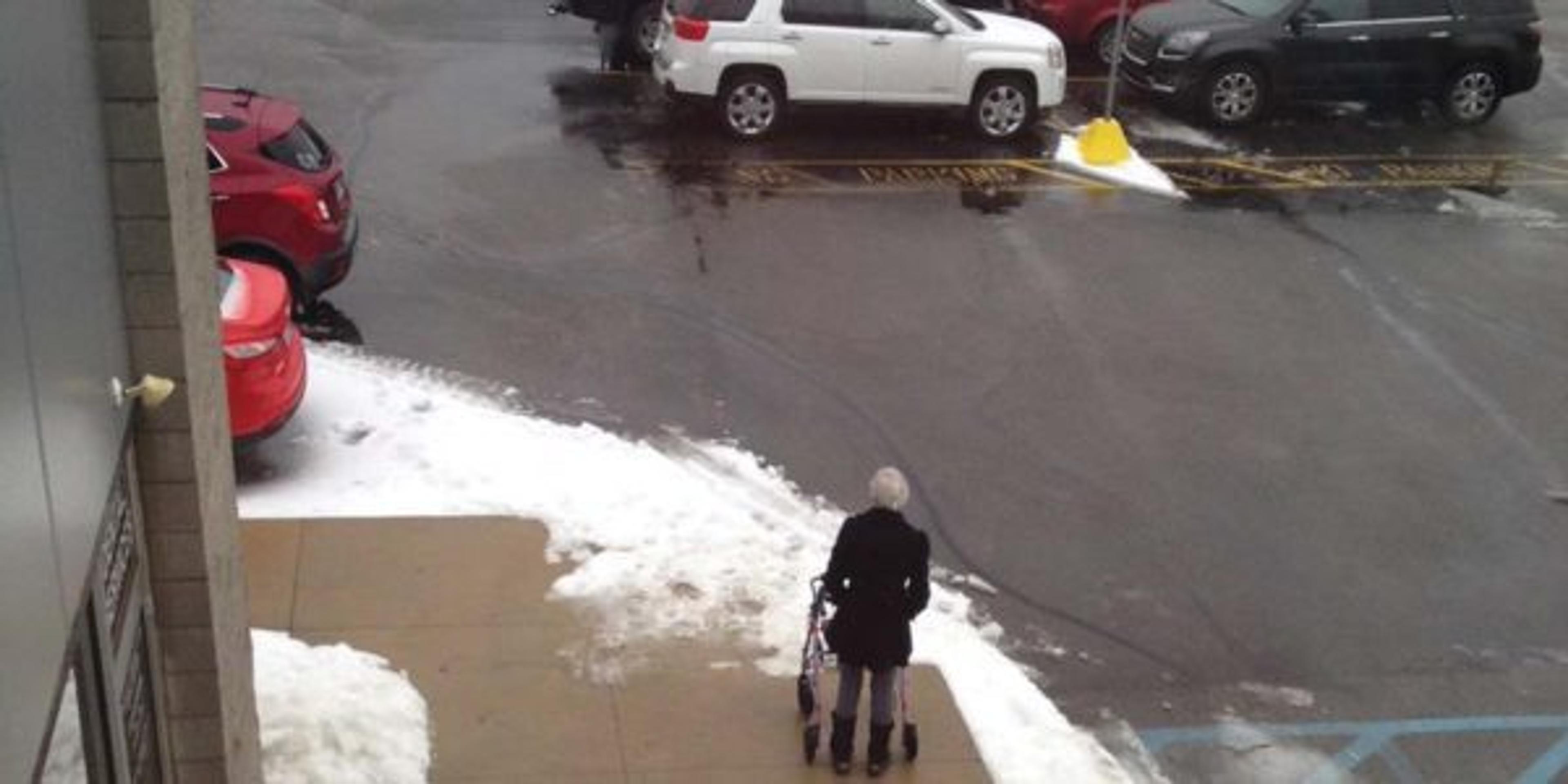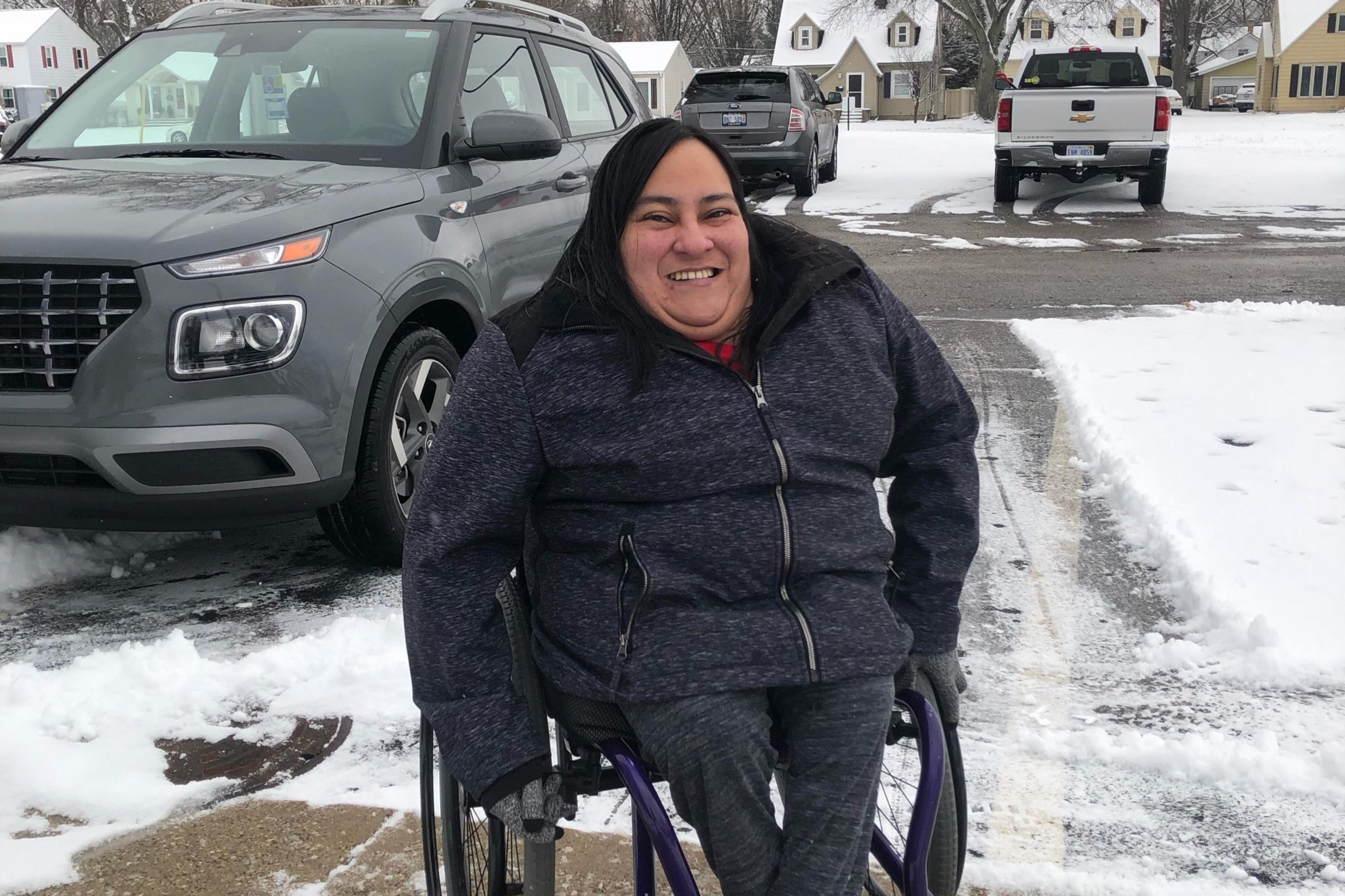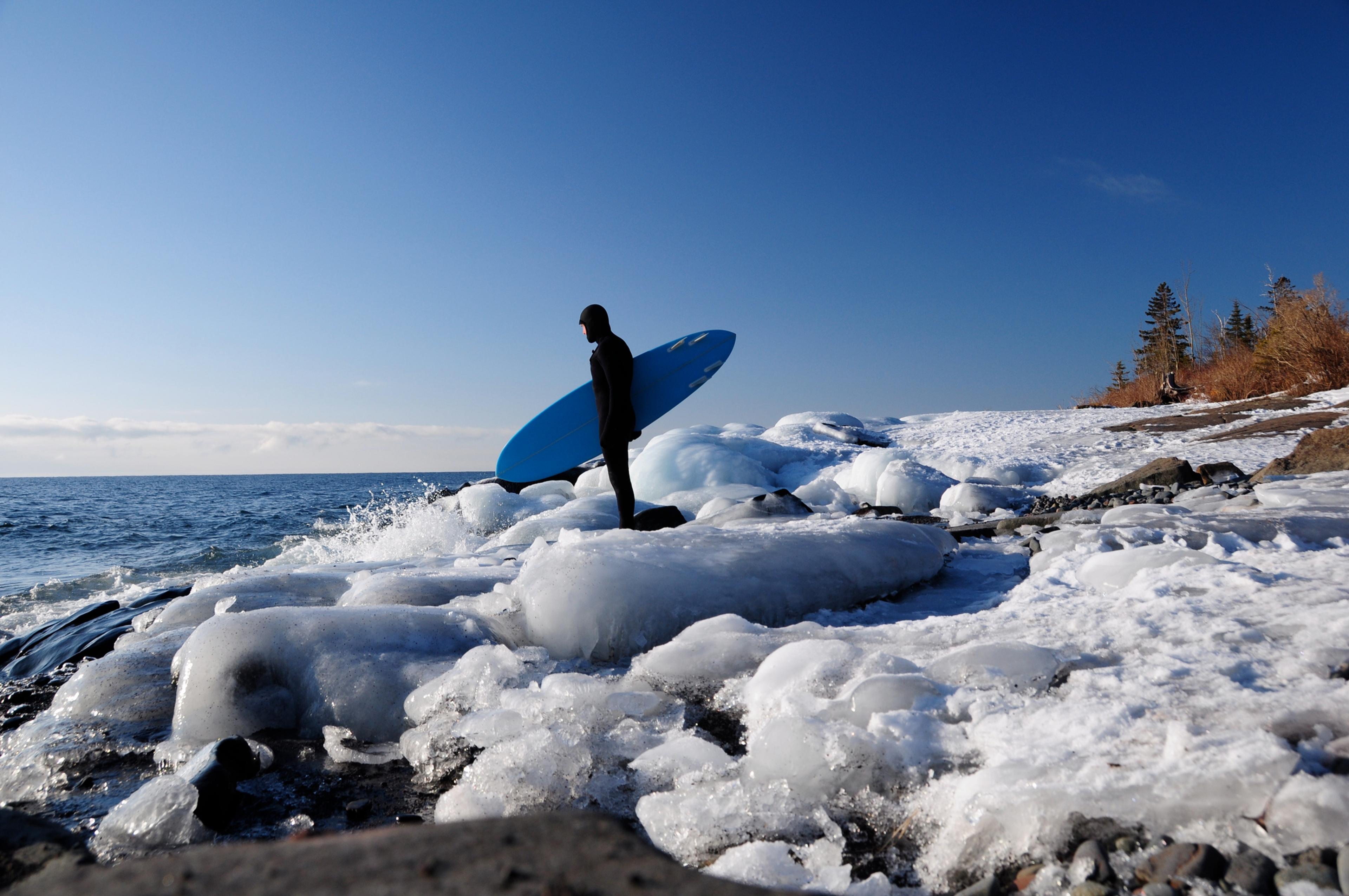Be an Ally for People with Disabilities in the Winter
A Healthier Michigan
| 4 min read

Between the ice, heavy snow and gusting winds, a Michigan winter can be challenging for nearly everyone. Something as simple as entering a building can be downright dangerous for someone with a physical disability or other mobility issues.

Disability advocate Lucia Rios
Holland resident Lucia Rios has tipped over in her wheelchair and even catapulted out during winter mishaps. Not only are these situations painful and embarrassing, getting back into her chair can be a wet and exhausting experience. Born with spina bifida, she uses a wheelchair or crutches to move around.
“I think people don’t realize how dangerous winter can be for people with disabilities trying to move down the sidewalk. There have been times where I haven’t been able to control my wheelchair on a slight hill because it’s so icy,” said Rios, an expert in ADA standards for accessible design, and currently part of Salesforce’s Office of Accessibility.
Similar scenarios can create hazards for people who are using a cane, crutches or a walker to assist with their mobility. She has some suggestions for ways to be an ally for people with disabilities – whether these are permanent or temporary because they are recovering from an injury or surgery.
Access aisles.
Keep the access aisle with the diagonal lines next to handicap-accessible parking clear of snow and ice. That extra space is used by people with disabilities to get out of their vehicles and into their wheelchairs. “Sometimes, I’ll see that snow is cleared from the actual handicap accessible parking space but not the access aisle, which makes the parking space not very accessible because there’s no way to get out,” Rios said.
Curb cuts.
When shoveling snow from sidewalks, don’t forget the curb cuts. Maneuvering a wheelchair onto a sidewalk from a parking space can be nearly impossible if the curb cut is packed with snow. Think about the path a person might take from their vehicle or a transit stop to the door of a building or home. “I have fallen out of my chair multiple times because the curb cuts weren’t shoveled,” Rios said.
Brush away snow.
If you are brushing snow from your vehicle and see a vehicle nearby in an accessible parking space, consider taking a few minutes to brush off the snow. This can be a major assist for someone with mobility issues. “I used to have a friend that would do that for me before I went to work. I always appreciated the help,” Rios said.
Hold the door.
If you see someone struggling against the elements to enter a building, help with the door. “My niece worked at an organization and there was a co-worker with a physical disability. She recognized that he was having difficulty getting into the building because of the snow. She brought it to the organization’s attention, but when they didn’t take action she decided to personally do something. She began helping him after asking him if she could.”
Ask first.
Before you touch a wheelchair, first ask how you can be of assistance. Wheelchairs are different, and a powerful push can tip them over or throw a user to the ground. Try saying something like, “I noticed you’re stuck. How can I help you safely?” It’s always good to ask if assistance is needed vs. assuming.
Avoid tripping hazards.
Make sure the mat, rug or carpet at an entrance that is intended for people to wipe off their shoes or boots isn’t a slipping hazard for people with mobility issues. One way to do that is by taping it down.
Speak up.
If you notice the entrance to a building isn’t safe because of the snow or ice, bring it to someone’s attention. “One time I was meeting a friend at a restaurant but I couldn’t enter because of the snow. I spoke with the manager because I wanted the restaurant to know why their building was inaccessible. The manager asked, well, how can we fix this? I created a diagram of what would make an accessible route, so whoever was shoveling could know where to shovel.”
Related Links:
Photo credit: Lucia Rios





